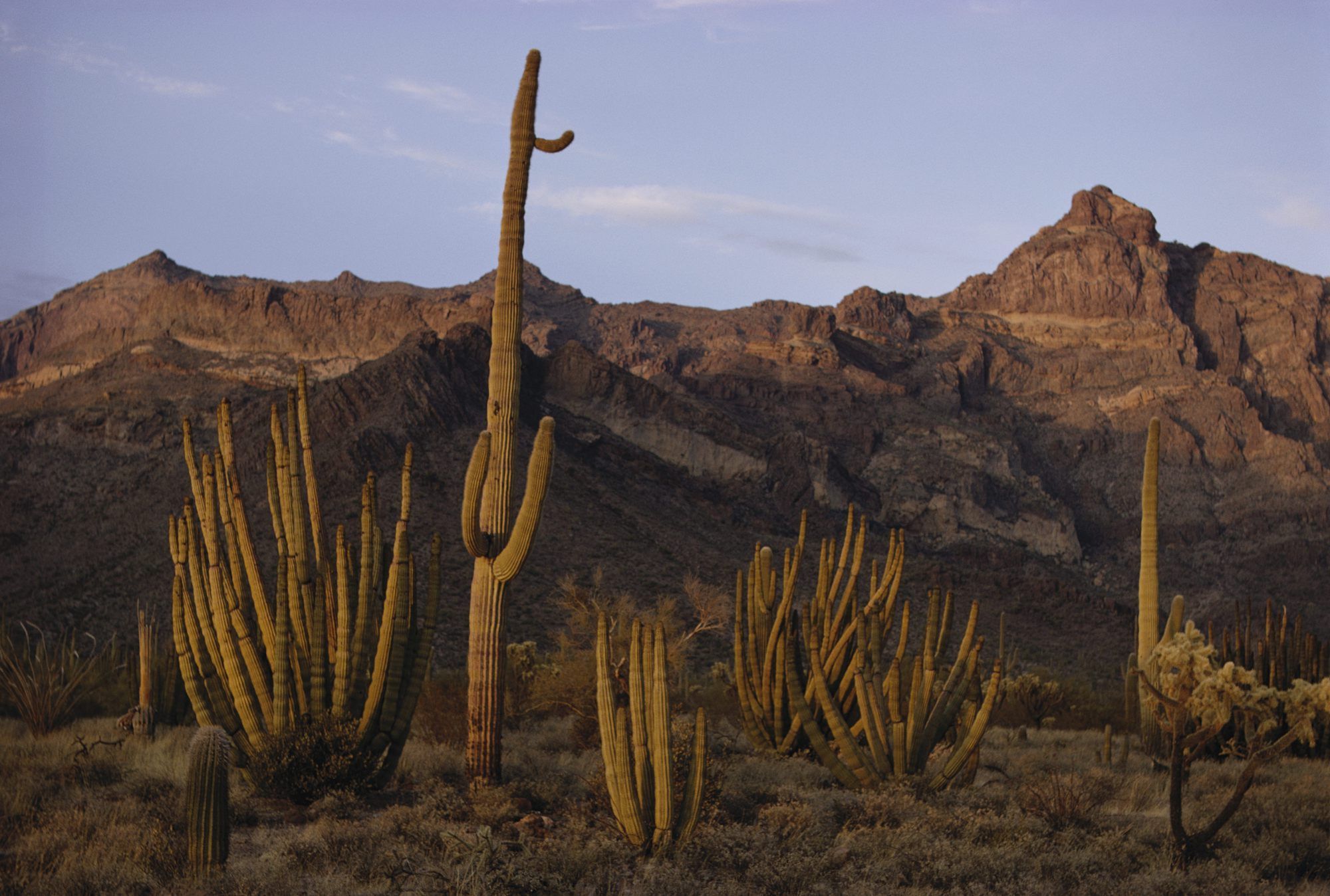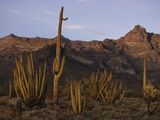Which Of The Following Is Not A Common Animal Adaptation To Desert Conditions?
Desert Biome
Desert Biome
Deserts are extremely dry out environments that are home to well-adjusted plants and animals. The principal types of deserts include hot and dry deserts, semi-barren deserts, coastal deserts, and common cold deserts.
Subjects
Biology, Ecology, Geography, Physical Geography
Epitome
Organ Pipe Cactus
The Organ Pipage Cactus National Monument in Arizona is full of life despite its arid, desolate actualization mural. This part of the Sonoran Desert of home to a diversity of animals including bats, the kangaroo rat, and the dark-blooming cereus cactus.
Walter Meayers Edwards

The desert biome covers most one-fifth of Earth's surface. This biome has a layer of soil that tin can either exist sandy, gravelly, or stony, depending on the type of desert. Deserts commonly become at about fifty centimeters (xx inches) of rainfall a yr, and the organisms that live in deserts are adjusted to this extremely dry climate. Plants in deserts take adaptations to conserve water. For instance, cacti accept enlarged stems to store water, likewise equally spines to protect these water reserves from thirsty animals. Animals such as the black-tailed jackrabbit (Lepus californicus) are besides adapted to life in the desert: Their extra-long ears help to transfer out excess heat from their body into the air. The four main types of desert include hot and dry deserts, semi-barren deserts, coastal deserts, and cold deserts. In hot and dry out deserts, also known as arid deserts, the temperatures are warm and dry year-round. Some famous arid deserts include the Sahara Desert that covers much of the African continent and the Mojave Desert located in the southwest of the U.s.. Semi-arid deserts are a flake cooler than hot and dry out deserts. The long, dry summers in semi-arid deserts are followed by winters with some pelting. Semi-barren deserts are constitute in North America, Greenland, Europe, and Asia. Coastal deserts are a bit more boiling than other types of deserts. Although heavy fogs blow in from the declension, rainfall is nevertheless rare. The Atacama Desert of Chile in Due south America is an example of a coastal desert. Cold deserts are still dry out but have extremely depression temperatures in comparing to the other types of deserts. The Antarctic is an case of a cold desert.

The Organ Pipage Cactus National Monument in Arizona is full of life despite its barren, desolate appearing landscape. This office of the Sonoran Desert of dwelling to a variety of animals including bats, the kangaroo rat, and the night-blooming cereus cactus.
Walter Meayers Edwards
Noun
a modification of an organism or its parts that makes information technology more fit for being. An adaptation is passed from generation to generation.
Substantive
area of the planet which tin be classified according to the plant and fauna life in it.
climate
Noun
all weather condition atmospheric condition for a given location over a period of time.
Substantive
area of land that receives no more than 25 centimeters (x inches) of precipitation a year.
Source: https://www.nationalgeographic.org/encyclopedia/desert-biome/
Posted by: williamsgeonsely.blogspot.com

0 Response to "Which Of The Following Is Not A Common Animal Adaptation To Desert Conditions?"
Post a Comment